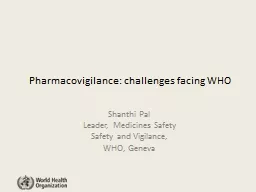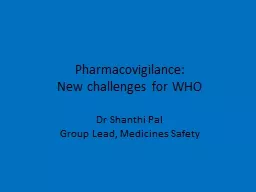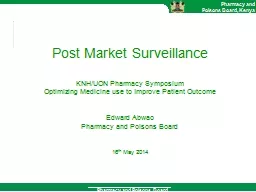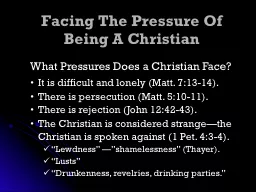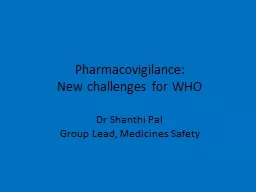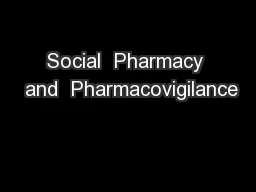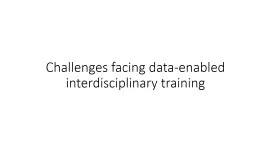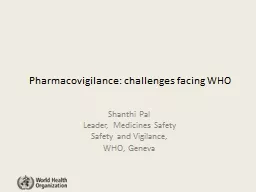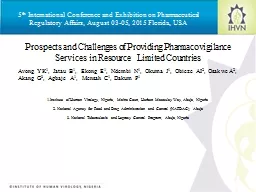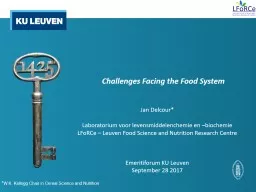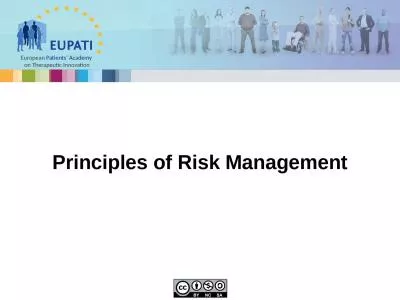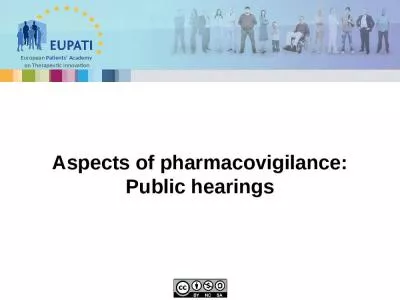PPT-Pharmacovigilance: challenges facing WHO
Author : debby-jeon | Published Date : 2019-02-20
Shanthi Pal Leader Medicines Safety Safety and Vigilance WHO Geneva What is pharmacovigilance The science and activities relating to the detection assessment understanding
Presentation Embed Code
Download Presentation
Download Presentation The PPT/PDF document "Pharmacovigilance: challenges facing WHO" is the property of its rightful owner. Permission is granted to download and print the materials on this website for personal, non-commercial use only, and to display it on your personal computer provided you do not modify the materials and that you retain all copyright notices contained in the materials. By downloading content from our website, you accept the terms of this agreement.
Pharmacovigilance: challenges facing WHO: Transcript
Download Rules Of Document
"Pharmacovigilance: challenges facing WHO"The content belongs to its owner. You may download and print it for personal use, without modification, and keep all copyright notices. By downloading, you agree to these terms.
Related Documents

